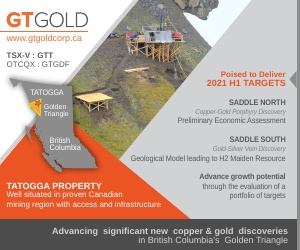British Columbia: still prospective after all these years
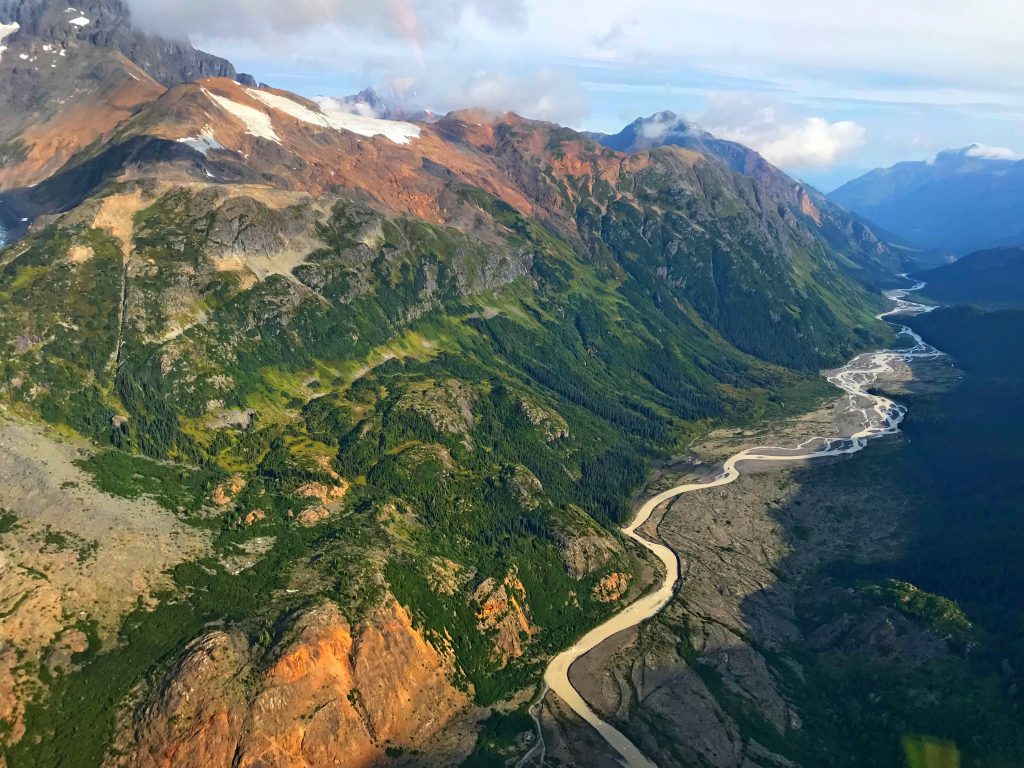
By Ellsworth Dickson
Canada’s westernmost Province of British Columbia was built on gold when back in the spring of 1858 thousands of prospectors landed in the Colony of Victoria on the southern tip of Vancouver Island. Using any kind of boat – seaworthy or not – they crossed Georgia Strait – now the Salish Sea – and joined the Fraser River Gold Rush on the Mainland. The mighty Fraser is the longest river within British Columbia, rising at Fraser Pass in the Rocky Mountains and flowing for 1,375 kilometres (854 mi), into the Salish Sea at the city of Vancouver.
Not only did the placer miners find gold in the lower reaches of the Fraser River, they kept finding more as they headed north upstream. This led to the Barkerville Gold Rush in the Cariboo region – an area still active for both placer and hardrock mining and exploration.
Of course, in the early 1860s, infrastructure was nonexistent. Food and supplies were carried to the Cariboo on miners’ backs or by packtrains. The completion of the Cariboo Wagon Road to Barkerville in 1865 was a great boon to further development.
As prospectors fanned out over the new province, southeastern BC developed as a copper and silver-lead-zinc producing region where new explorers are seeing good results exploring old mine sites at today’s much higher metals prices.
Major copper mines developed such as Teck’s Highland Valley, Copper Mountain and Taseko’s Gibraltar Mine with some hosting gold values as well such as the Imperial Metals Red Chris Mine. There are other major projects waiting to be developed such as Yellowhead copper and the polymetallic Windy Craggy deposit. Others are under development, including Serengeti’s Kwanika copper deposit and Consolidated Woodjam’s copper project in the northern Quesnel Trough, which hosts numerous porphyry copper-gold deposits.
Seeing a comeback in recent years, in far northwestern BC in what is known as the Golden Triangle, this region has become a very attractive place to explore with numerous companies actively seeking gold, silver, copper and nickel.
Companies are now exploring BC from the U.S. border in the south to Atlin near the Yukon border in the north and everything in between.
If one goes to the BC government’s Mapplace website, it is an amazing site to see virtually every known mineral occurrence in the province staked for a wide variety of minerals and metals. This includes industrial metals, including tantalum, niobium, rare earths, cobalt, graphite, limestone and zeolite.
It is clear that explorers have faith that BC is still a prospective jurisdiction and investors may want to keep an eye on their efforts.
 P2 Gold Inc. [PGLD-TSXV] is a grassroots mineral exploration company focused on precious metals discoveries in the Pacific Northwest of North America, including British Columbia’s fabled Golden Triangle region.
P2 Gold Inc. [PGLD-TSXV] is a grassroots mineral exploration company focused on precious metals discoveries in the Pacific Northwest of North America, including British Columbia’s fabled Golden Triangle region.
The management team at P2 Gold has extensive experience with the Golden Triangle. They discovered the high-grade gold Brucejack Mine in in the heart of the Golden Triangle and advanced it from a grassroots exploration discovery through feasibility, permitting, financing, construction and into production, while establishing Pretium Resources Inc. [PVG-TSX, NYSE] as a highly profitable intermediate gold producer. Prior to Pretium Resources, the management team were key members of the executive team that transitioned Silver Standard (now known as SSR Mining) from a junior explorer to a silver producer with a portfolio of silver and gold projects in seven countries. P2 Gold plans to capitalize on its management’s experience and relationships to create value by advancing discoveries and acquisitions in the Pacific Northwest to production.
 In addition to an experienced management team with a track record of delivering, P2 Gold has five grassroots exploration properties with the potential to be company makers located in the Pacific Northwest: Todd Creek (option to earn a 70% interest) and BAM (option to earn a 100% interest) located in the Golden Triangle in northwest BC; Silver Reef (option to earn a 100% interest), located in the North American Silver Belt in northwest BC; and Stockade (lease of a 100% interest) and Lost Cabin (lease of a 100% interest) located in southern Oregon.
In addition to an experienced management team with a track record of delivering, P2 Gold has five grassroots exploration properties with the potential to be company makers located in the Pacific Northwest: Todd Creek (option to earn a 70% interest) and BAM (option to earn a 100% interest) located in the Golden Triangle in northwest BC; Silver Reef (option to earn a 100% interest), located in the North American Silver Belt in northwest BC; and Stockade (lease of a 100% interest) and Lost Cabin (lease of a 100% interest) located in southern Oregon.
In late November 2020, the company announced results from a three-hole, 1,027-metre drill program at the Todd Creek property, which covers 32,000 hectares and is located roughly 35 km northeast of Stewart, BC. The western side of the Todd Creek Property covers a 12-km by 3-km corridor of altered lower Jurassic volcanic rocks which host at least five zones of gold-copper mineralization including the Yellow Bowl and VMS zones, the targets of the 2020 exploration drill program, and the historical Fall Creek, Ice Creek and South zones. The known zones of mineralization at the Todd Creek property, which borders the east side of Pretium Resources Inc.’s Bowser claims, are found in the same stratigraphy that hosts the nearby Brucejack, Snowfield and Goldstorm deposits.
Highlights from the Todd Creek drill program included 4.19% copper, 0.19 g/t gold and 4.90 g/t silver over 1.8 metres within a 3.3-metre interval grading 3.03% copper, 0.20 g/t gold and 7.15 g/t silver. The company noted that prospecting has shown that both the Yellow Bowl and VMS Zones are covered by a mafic unit consisting of basalt flows and volcaniclastics which overlie interbedded rhyolite and andesitic volcanics. The zones are marked by intense QSP alteration surrounded by chlorite alteration, believed to be related to a porphyry system at depth.
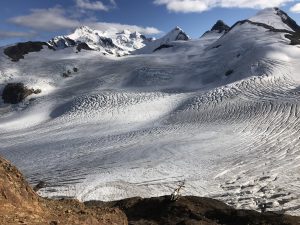 In late September 2020, the company reported results from a Phase one exploration drill program at the 23,000-hectare Silver Reef property, which consisted of 10 holes covering 1,315 metres. Highlights included drill hole SR-004, which intersected 1.18 g/t gold, 521.0 g/t silver, 0.71% lead, and 2.17% zinc over 0.5 metres in the Main Zone. The latest drill results include Hole SR-011 (Northwest Zone) that intersected 0.24 g/t gold, 188.5 g/t silver, 0.99% lead and 1.51% zinc over 7.49 metres, including a 1.68-metre interval grading 0.55 g/t gold, 410.69 g/t silver, 2.38% lead and 3.18% zinc.
In late September 2020, the company reported results from a Phase one exploration drill program at the 23,000-hectare Silver Reef property, which consisted of 10 holes covering 1,315 metres. Highlights included drill hole SR-004, which intersected 1.18 g/t gold, 521.0 g/t silver, 0.71% lead, and 2.17% zinc over 0.5 metres in the Main Zone. The latest drill results include Hole SR-011 (Northwest Zone) that intersected 0.24 g/t gold, 188.5 g/t silver, 0.99% lead and 1.51% zinc over 7.49 metres, including a 1.68-metre interval grading 0.55 g/t gold, 410.69 g/t silver, 2.38% lead and 3.18% zinc.
The company said drilling demonstrated that the Main Zone and Northwest Zone structures are well defined with mineralization typical of silver deposits within the silver belt that runs from Idaho through British Columbia into the Yukon.
In October 2020, P2 reported results from the soil geochemical program at the BAM property where mineralization was discovered in the 1960s when exploration in the region was focused on copper, resulting in the discovery of the Galore Creek and Schaft Creek deposits.
P2’s soil sampling program covered an area measuring 2.0 by 4.8 km and defined a sinuous gold anomaly measuring 3.6 km long. The company said the program resulted in the discovery of a new gold zone, named the Monarch Gold Zone, where 16 soil samples assayed greater than 0.50 g/t gold with the highest-grade sample assaying 5.73 g/t gold.
To support exploration programs on those properties, the company raised $3.5 million in late July, 2020 from a private placement of 4.6 million non-flow-through units priced at 50 cents each and 2.0 million flow-through common shares at 60 cents per share.
On November 18, 2020, the company said it had also raised $1.42 million from a non-brokered private placement of 3.56 million company units priced at 40 cents per unit.
P2 Gold shares were trading at $0.33 on December 10, 2020 in a 52-week price range of 90 cents and $0.05, leaving the company with a market cap of $9,900,000 based on roughly 30 million shares outstanding.
GT Gold Corp. [GTT-TSXV, GTGDF-OTC] is a company with a lot going for it as it works to advance significant new gold-copper discoveries in British Columbia’s fabled Golden Triangle region.
Aside from a highly experienced management team led by President and CEO Paul Harbidge, GT Gold also benefits from the backing of Newmont Corp. [NGT-TSX; NEM-NYSE], the world’s leading gold producer, which holds a 14.9% stake in the exploration junior. And in a bull market for both gold and copper that looks to have a long way to run, GT Gold appears to be in the right place at the right time.
The company’s flagship Tatogga property is located in the Golden Triangle of British Columbia, a region that is home to some of the world’s largest and richest mineral deposits, including Eskay Creek (gold), KSM (copper-gold-porphyry) and Brucejack (gold). Eskay Creek became the world’s highest-grade gold producer when it entered into production in 1994.
The Tatogga property covers 47,500 hectares and is situated within 20 kilometres northwest of the Red Chris copper-gold mine, near the community of Iskut, and just off the paved Stewart-Cassier Highway 37. So far, GT Gold has made two significant discoveries on the property, including a precious metals-rich vein system at Saddle South and a gold-rich copper porphyry at Saddle North.
 Investors who bought in at this time last year, when the stock was trading at just over 90 cents, have been rewarded with a year-over-year increase of over 85%, with GT Gold hovering above $1.75 now and outperforming the GDXJ Van Eck Junior Gold Index by near 50% over the same time period. The 52-week range for GT Gold is between $2.15 and 84 cents.
Investors who bought in at this time last year, when the stock was trading at just over 90 cents, have been rewarded with a year-over-year increase of over 85%, with GT Gold hovering above $1.75 now and outperforming the GDXJ Van Eck Junior Gold Index by near 50% over the same time period. The 52-week range for GT Gold is between $2.15 and 84 cents.
On July 6, 2020, the company announced a maiden mineral resource estimate for Saddle North, which is expected to form the basis for a preliminary economic assessment that is due to be completed in the first quarter of 2021. According to the maiden resource estimate, Saddle North contains an indicated resource of 298 million tonnes of grade 0.28% copper and 0.36 g/t gold for a total of 1.81 billion pounds of copper and 3.47 million ounces of gold. On top of that is an inferred resource of 543 million tonnes of grade 0.25% copper and 0.31 g/t gold for a total of 2.98 billion pounds of copper and 5.46 million ounces of gold. GT Gold has said Saddle North is amenable to open pit as well as bulk underground mining methods, and could easily be expanded as the mineralization remains open at depth as well as to the northwest and southeast.
At Saddle South, the company has initiated a comprehensive re-log of all drill core as work begins to prepare a geological model in the first half of 2021, with a maiden resource estimate and economic evaluation to follow. The re-log is similar to the one undertaken earlier this year at Saddle North.
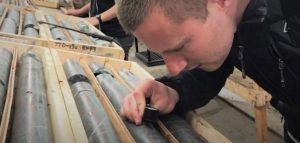 Meanwhile, a third target of merit on the Tatogga property known as Quash Pass, is located within 8 kilometres southwest of the Saddle North and South discoveries. In an October 20, 2020 update, GT Gold confirmed the completion of an exploration drilling program at Quash Pass, consisting of nine diamond boreholes over 4,841 metres. The aim was to probe selected greenfield targets across two large-scale anomalous and soil geochemical trends, each spanning a strike length of at least 6 kilometres. Results are expected to be released as soon as they are received, compiled and interpreted.
Meanwhile, a third target of merit on the Tatogga property known as Quash Pass, is located within 8 kilometres southwest of the Saddle North and South discoveries. In an October 20, 2020 update, GT Gold confirmed the completion of an exploration drilling program at Quash Pass, consisting of nine diamond boreholes over 4,841 metres. The aim was to probe selected greenfield targets across two large-scale anomalous and soil geochemical trends, each spanning a strike length of at least 6 kilometres. Results are expected to be released as soon as they are received, compiled and interpreted.
GT Gold recently closed a $5.7 million fully-subscribed private placement with existing shareholders, that will be used primarily to fund its 2021 exploration program at Tatogga. With 130.0 million shares now outstanding, that leaves GT Gold with market cap of roughly $230 million. With gold and copper prices forecasted to continue climbing, the upcoming catalysts of the Saddle North PEA, Saddle South modeling and new greenfield exploration results position GT Gold very well for growth ahead in 2021.
 Westhaven Gold Corp. [WHN-TSXV] is advancing a high-grade gold discovery on the Shovelnose Project in southwest British Columbia’s newest gold district – the 110-km Spences Bridge Gold Belt (SBGB) that trends northwest from south of Merritt to south of Lillooet.
Westhaven Gold Corp. [WHN-TSXV] is advancing a high-grade gold discovery on the Shovelnose Project in southwest British Columbia’s newest gold district – the 110-km Spences Bridge Gold Belt (SBGB) that trends northwest from south of Merritt to south of Lillooet.
The company controls 37,000 hectares (370 km2) with four 100%-owned gold properties spread along this underexplored belt: Shovelnose, Skoonka, Skoonka North and Prospect Valley.
Gold mineralization in the SBGB is a classic low-sulphidation epithermal system similar to large gold deposits around the world such as Hishikari, Kupol, and Fruta del Norte. There have been excellent high-grade drill results since 2018 such as 24.50 g/t gold and 107.92 g/t silver over 17.70 metres, 39.31 g/t gold and 133.11 g/t silver over 12.66 metres and 557.00 g/t gold and 381.00 g/t silver over 1.00 metre.
Funding is in place to complete the 40,000-metre drilling program this year.
Gareth Thomas, President and CEO, stated: “The goal for the 2020 drill program was to find new gold vein zones outside of the high-grade South Zone discovery. Our team discovered a brand-new quartz outcrop (Franz Zone) of white to gray, opaque, colloform-banded chalcedony veins hosted in rhyolite, one kilometre northwest of the FMN target. If the Franz Zone is in fact the extension of Vein Zone 1, we will have extended the strike length of Vein Zone 1 to 3.7 kilometres.”
The newly discovered Franz Zone is located approximately 2.8 kilometres along strike from the high-grade gold discovery at the South Zone. Both the Franz Zone and South Zone are on the Shovelnose property. Over half of this strike length has not been drill tested.
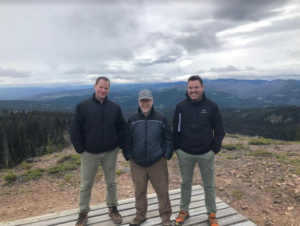
Photo is taken from the top of Shovelnose Gold Property. Source: Westhaven Ventures Inc.
Following the first drill hole at the newly-discovered Franz Zone that returned 7.78 metres grading 14.84 g/t gold and 39.40 g/t silver, Westhaven continues to intersect good gold values. Recent drill results from the Franz Zone included hole SN20-108 that returned 34.08 metres (37.09-71.17m) of 2.07 g/t gold and 16.50 g/t silver, including 13.10 metres of 4.86 g/t gold and 31.57 g/t silver, including 2.54 metres of 16.88 g/t gold and 99.28 g/t silver. Hole N20-112 (Franz) (68.4-77.37 metres) returned 8.97 metres of 2.38 g/t gold and 63.59 g/t silver, including 5.72 metres of 3.46 g/t gold and 87.38 g/t silver.
The latest assays from the Forget Me Not Zone (271.15-291 metres) hole SN20-139 (FMN) with 19.85 metres of 2.62 g/t gold and 139.75 g/t silver, including 10.44 metres of 3.67 g/t gold and 209.04 g/t silver, including 5.5 metres of 4.58 g/t gold and 267.35 g/t silver. This is the third-highest silver intercept drilled to date on this property (0.58 metres of 581 g/t silver).
Peter Fischl, Exploration Manager, commented: “Drilling through the mid-summer has extended the strike length of the three vein zones originally defined in drilling at South Zone and previously intersected in historic drilling to the northwest at the MIK and Tower showings. Vein Zone 3 has now been traced in recent drilling over a strike length of 650 metres. It remains open to the northwest.”
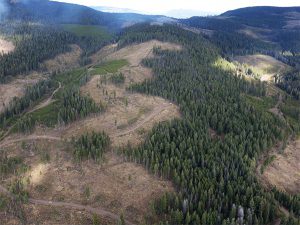 The Shovelnose property is situated off a major highway, near electric power, rail, large producing mines, and within commuting distance from the city of Merritt, which translates into low cost exploration. Forestry roads along the SBGB allow year-round access. The Shovelnose Project is 2.5-hour drive from Vancouver.
The Shovelnose property is situated off a major highway, near electric power, rail, large producing mines, and within commuting distance from the city of Merritt, which translates into low cost exploration. Forestry roads along the SBGB allow year-round access. The Shovelnose Project is 2.5-hour drive from Vancouver.
As it stands, the four properties on the large land package offer numerous high-potential targets for future exploration. For example, drill results on the Skoonka property have returned 20.20 g/t gold over 12.80 metres and 26.80 g/t gold over 3.31 metres. The 2021 drill program will follow up more Skoonka targets as well as other prospective targets along the belt.
Westhaven Gold has 102,472,409 shares outstanding with insiders holding 30%, institutions and fund with 17% and retail investors with 43%.

